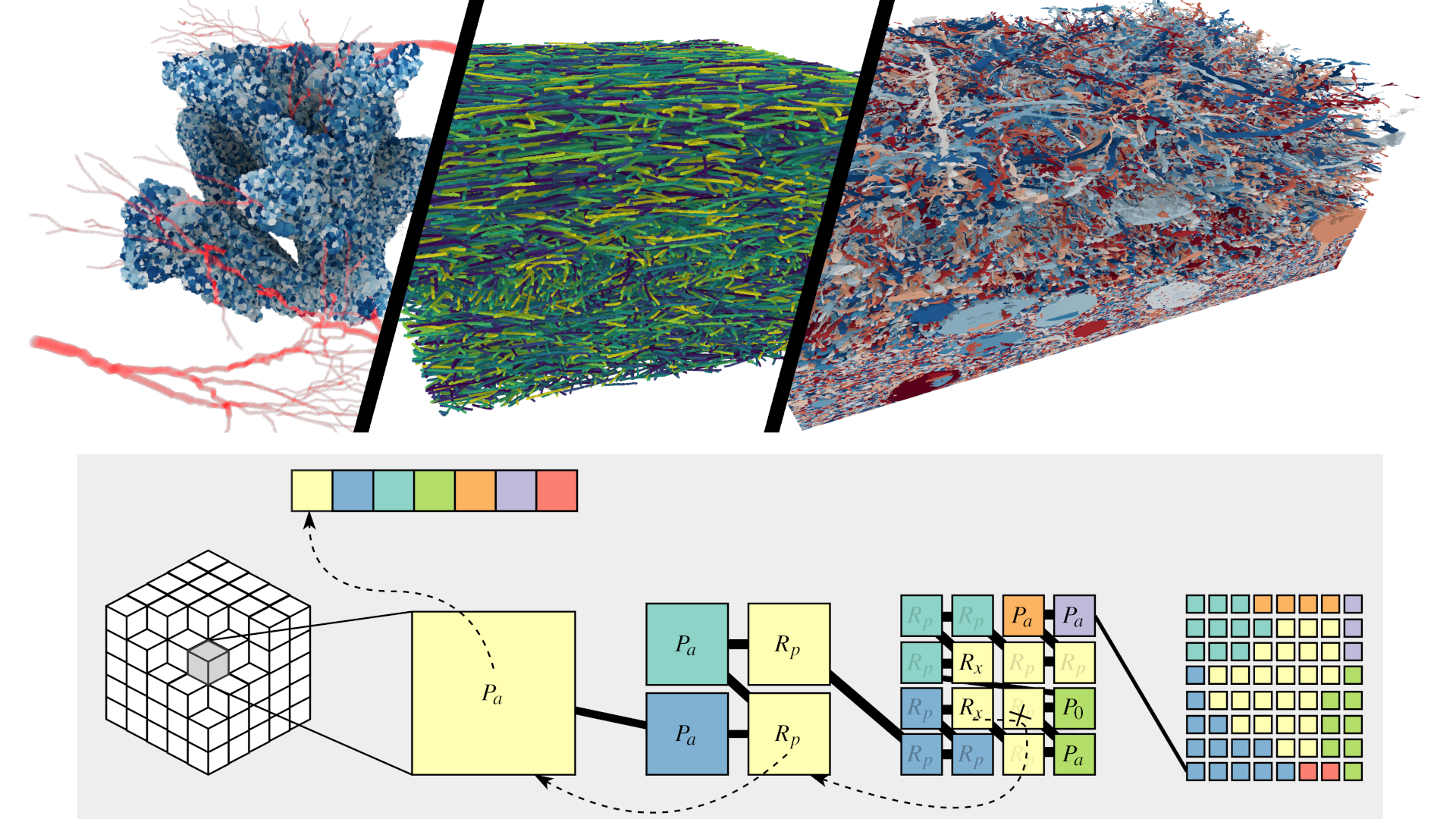Best Paper Award
Fast Compressed Segmentation Volumes for Scientific Visualization
Max Piochowiak, Carsten Dachsbacher
DOI: 10.1109/TVCG.2023.3326573
Room: Plenary-1
2023-10-24T03:12:00ZGMT-0600Change your timezone on the schedule page
2023-10-24T03:12:00Z

Fast forward
Full Video
Keywords
Segmentation volumes, lossless compression, volume rendering
Abstract
Voxel-based segmentation volumes often store a large number of labels and voxels, and the resulting amount of data can make storage, transfer, and interactive visualization difficult. We present a lossless compression technique which addresses these challenges. It processes individual small bricks of a segmentation volume and compactly encodes the labelled regions and their boundaries by an iterative refinement scheme. The result for each brick is a list of labels, and a sequence of operations to reconstruct the brick which is further compressed using rANS-entropy coding. As the relative frequencies of operations are very similar across bricks, the entropy coding can use global frequency tables for an entire data set which enables efficient and effective parallel (de)compression. Our technique achieves high throughput (up to gigabytes per second both for compression and decompression) and strong compression ratios of about 1% to 3% of the original data set size while being applicable to GPU-based rendering. We evaluate our method for various data sets from different fields and demonstrate GPU-based volume visualization with on-the-fly decompression, level-of-detail rendering (with optional on-demand streaming of detail coefficients to the GPU), and a caching strategy for decompressed bricks for further performance improvement.